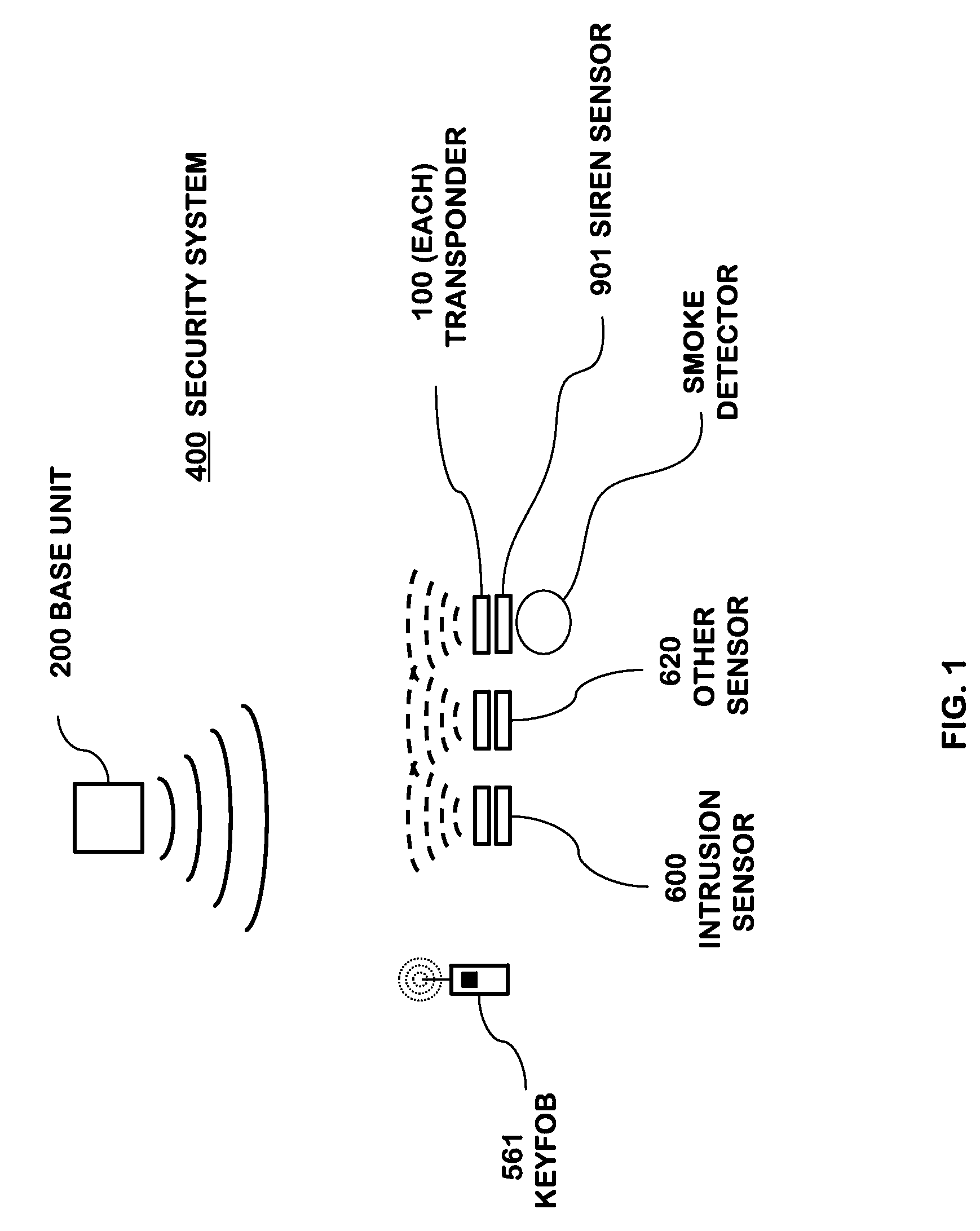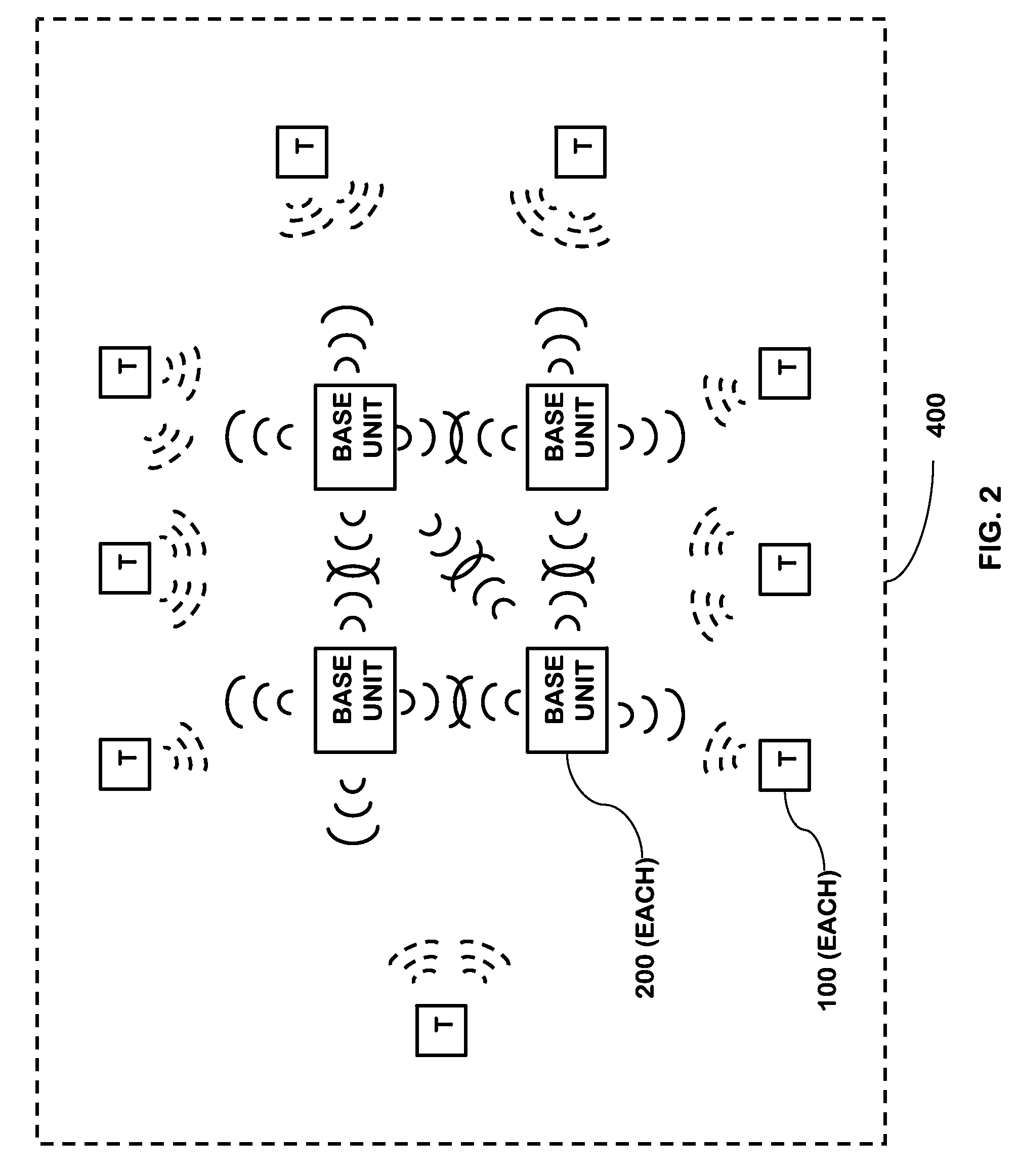System, method and device for detecting a siren
a siren and detection system technology, applied in the field of security systems, can solve the problems of increasing the cost of a complete system, increasing the actual cost of installation, and increasing the revenue of the security company, so as to dissuade the security company from installing more complete systems
- Summary
- Abstract
- Description
- Claims
- Application Information
AI Technical Summary
Benefits of technology
Problems solved by technology
Method used
Image
Examples
Embodiment Construction
[0056]The present invention is a highly reliable system and method for constructing a security network, or security system, for use in a building, such as a commercial building, single or multifamily residence, or apartment. The phrases “security system” and “security network” shall be considered interchangeable as they apply to the present invention. The security network of the present invention may also be used for buildings that are smaller structures such as sheds, boathouses, other storage facilities, and the like. Throughout this specification, a residential house will be used as an example when describing aspects of the present invention. However, the present invention is equally applicable to other types of buildings.
[0057]The present invention provide security networks, devices, and methods for detecting activation of an audible alarm and providing notification thereof. The security network described herein includes a set of distributed components that together operate to f...
PUM
 Login to View More
Login to View More Abstract
Description
Claims
Application Information
 Login to View More
Login to View More - R&D
- Intellectual Property
- Life Sciences
- Materials
- Tech Scout
- Unparalleled Data Quality
- Higher Quality Content
- 60% Fewer Hallucinations
Browse by: Latest US Patents, China's latest patents, Technical Efficacy Thesaurus, Application Domain, Technology Topic, Popular Technical Reports.
© 2025 PatSnap. All rights reserved.Legal|Privacy policy|Modern Slavery Act Transparency Statement|Sitemap|About US| Contact US: help@patsnap.com



